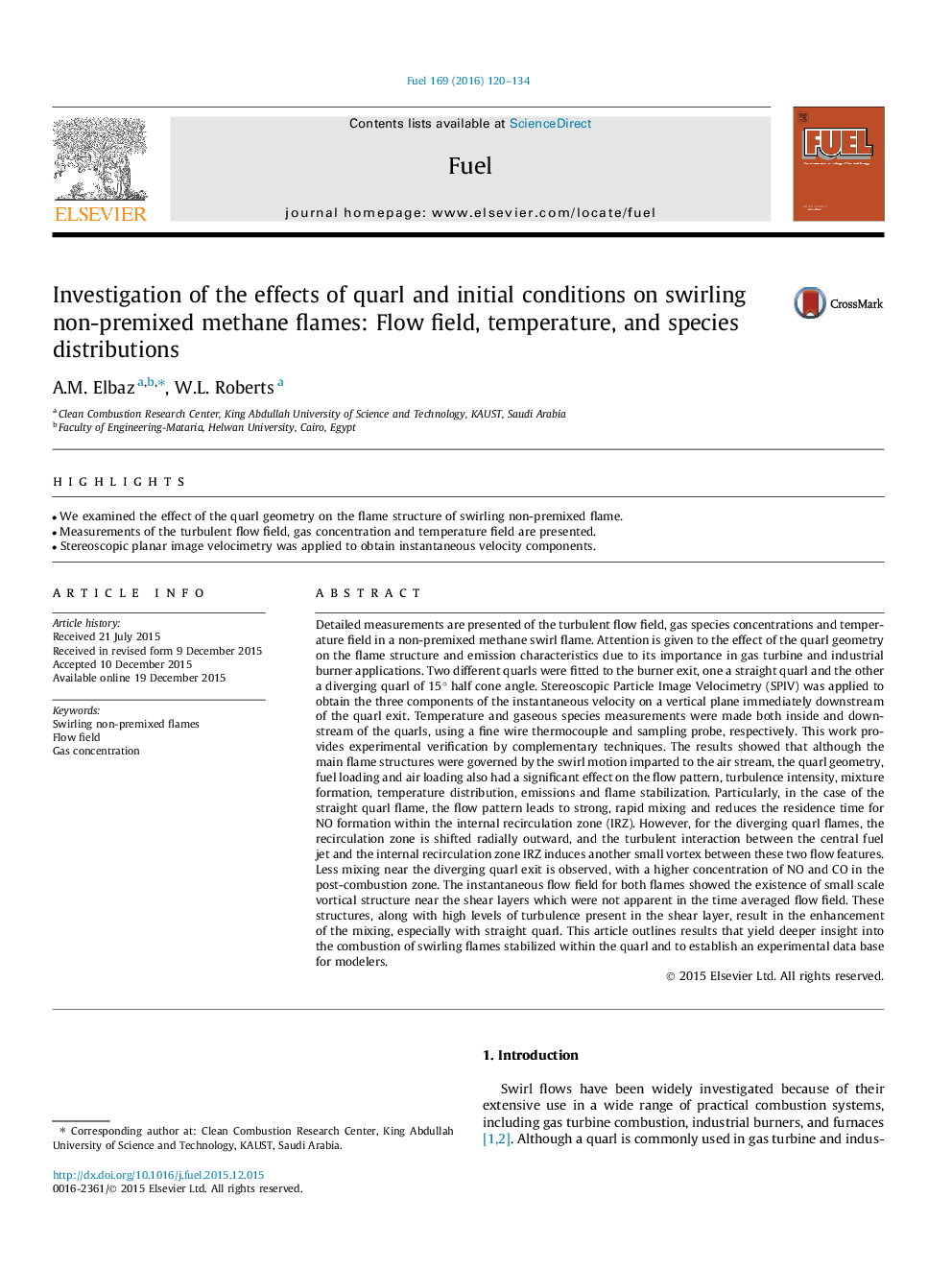| Article ID | Journal | Published Year | Pages | File Type |
|---|---|---|---|---|
| 205321 | Fuel | 2016 | 15 Pages |
•We examined the effect of the quarl geometry on the flame structure of swirling non-premixed flame.•Measurements of the turbulent flow field, gas concentration and temperature field are presented.•Stereoscopic planar image velocimetry was applied to obtain instantaneous velocity components.
Detailed measurements are presented of the turbulent flow field, gas species concentrations and temperature field in a non-premixed methane swirl flame. Attention is given to the effect of the quarl geometry on the flame structure and emission characteristics due to its importance in gas turbine and industrial burner applications. Two different quarls were fitted to the burner exit, one a straight quarl and the other a diverging quarl of 15° half cone angle. Stereoscopic Particle Image Velocimetry (SPIV) was applied to obtain the three components of the instantaneous velocity on a vertical plane immediately downstream of the quarl exit. Temperature and gaseous species measurements were made both inside and downstream of the quarls, using a fine wire thermocouple and sampling probe, respectively. This work provides experimental verification by complementary techniques. The results showed that although the main flame structures were governed by the swirl motion imparted to the air stream, the quarl geometry, fuel loading and air loading also had a significant effect on the flow pattern, turbulence intensity, mixture formation, temperature distribution, emissions and flame stabilization. Particularly, in the case of the straight quarl flame, the flow pattern leads to strong, rapid mixing and reduces the residence time for NO formation within the internal recirculation zone (IRZ). However, for the diverging quarl flames, the recirculation zone is shifted radially outward, and the turbulent interaction between the central fuel jet and the internal recirculation zone IRZ induces another small vortex between these two flow features. Less mixing near the diverging quarl exit is observed, with a higher concentration of NO and CO in the post-combustion zone. The instantaneous flow field for both flames showed the existence of small scale vortical structure near the shear layers which were not apparent in the time averaged flow field. These structures, along with high levels of turbulence present in the shear layer, result in the enhancement of the mixing, especially with straight quarl. This article outlines results that yield deeper insight into the combustion of swirling flames stabilized within the quarl and to establish an experimental data base for modelers.
